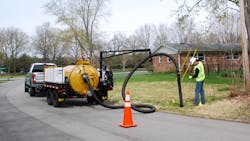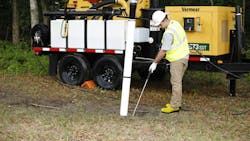How to Calculate the Cost of Vacuum Excavation
Editors’note: This article has been updated since it was originally published in 2019. Content was provided by Vermeer.
To get a rough estimate of operating costs for vacuum excavation, Steele recommends starting with a hole count.
“Each hole will usually be about 1 foot in diameter, but depths can vary,” he says. “Depending on ground conditions and climate, crews should be able to determine the approximate depth of each utility. So, if they need to excavate to a depth of 5 feet on average, they remove around 4 cubic feet of material for each hole. However, the volume of liquid being suctioned into the spoil tank also needs to be accounted for. Fluid volume can vary depending on the soil conditions, but crews can usually expect it to be a 1:1 ratio.”
What variables affect excavation costs?
“I’ve heard from contractors working in large cities that their crews often have to drive to a location outside of city limits, and they pay substantially more than they used to just a few years ago. It’s a real issue,” he says.
Transport weight of the truck and trailer vacs must also be considered. Steele recommends calculating the distance to a disposal site, researching dump costs, and studying DOT weight regulations during the bid process.
“After a project is completed, contractors should compare the estimated operational cost with actual expenses,” he says. “Going through this process will help them dial things in for future projects. Also, in some instances, investing in a way to take some of the variability out of a project is a better approach.”




